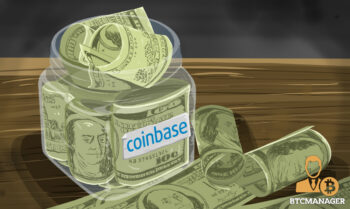2018-11-7 21:14 |
The adoption of digital assets by mainstream financial services was a critical topic at Swell 2018. The first ever Blockchain in Payments Report, released during the event, found that banks and payment providers around the world are not only interested in using digital assets, they also understand the value of using them for the purposes of settlement. These findings were a catalyst for the on-stage discussion by four financial institutions helping to pioneer the use of the digital asset XRP for cross-border payments on RippleNet.
Moderated by Remitr CEO Kanchan Kumar, the “800 Pound Gorilla” session focused solely on providing answers about digital asset adoption from organizations already using them for cross-border payments.
The panel featured Bittrex’s Head of Business Development Kwon Park, IDT’s SVP of Payment Services Alfredo O’Hagan, CFO of Cuallix Nicholas Palacios and Brad Ganey the SVP and COO of Catalyst Corporate Federal Credit Union.
Using digital assets in cross-border payments
Kumar began by outlining the potential impact broad digital asset adoption could have on the cross-border payments industry. He referenced an estimated $10 trillion dollars “sitting idle” in pre-funded accounts all around the world today. He linked this figure to “the importance of digital assets” before asking the panelists what value they saw in digital asset adoption more broadly.
Palacios responded first by saying that his company’s use of digital assets for payments came with a customer-focused goal in mind. He said that for his company, Cuallix, the focus was on “cost efficiency, time efficiency, transparency and giving our clients the best product we have.”
O’Hagan explained that like the other institutions on the panel, IDT started doing cross-border payments using the traditional infrastructure. The company started experimenting with digital assets two years ago, he explained, first settling payments to Mexico and Nigeria with Bitcoin. O’Hagan shared that when they started testing xRapid, it was clear that XRP’s speed and low cost transactions made it perfect for cross-border payments.
“In our business, speed equals reliability. That’s the expectation with the customer,” O’Hagan continued. “And the average speed of a transaction end-to-end was about a minute and fifty three seconds — from the moment of execution in the United States to the moment it arrived in a bank account in Mexico. That’s really just incredible.”
O’Hagan concluded that digital assets provided an innovative way to approach payments. He believed that using digital assets like XRP, really put the customer in the “center of the experience.”
A unique opportunity for credit unions and exchanges
Ganey said he saw potential for credit unions to provide a powerful new service to their customers. Catalyst Corporate Federal Credit Union serves 1400 credit unions across the country, many of whom already rely on wire services or products from payment providers to send cross-border payments.
“There’s tremendous opportunity,” said Ganey in referencing the use of blockchain and digital assets for cross-border payments. “Catalyst Corporate Federal Credit Union serves all the sand states (Arizona, California, Florida and Nevada). There are a lot of migrant populations there that credit unions are serving with other products. Today, the money is going to other payment providers because wires can’t offer a very competitive product.”
On behalf of the sole digital asset exchange on the panel, Park explained that Bittrex’s goal was to be a platform that could support the best uses of digital assets and their underlying technology. Park stated that Bittrex not only wanted to help facilitate cross-border payments, but also be the place that “unlocks the value” in that business.
“We think what XRP aims to do as a project is innovative and good for the consumer,” Park stated. “We want to be there to support from a platform standpoint.”
Educating regulators on digital asset application
The conversation then shifted to regulation and compliance of digital assets. Kumar immediately shared his personal belief that proper regulation of digital assets required a segmented approach, one that evaluated different use cases. He argued that regulators don’t need to worry about the use of digital assets as a payments vehicle because they are only being used as a vehicle for the transmission of value, not for speculative purposes.
O’Hagan said for IDT, the challenge was not with compliance or external regulators, but rather with education. He said they had to explain both internally to their own teams and externally to their banking partners about the benefits of using digital assets in payment flows.
Ganey agreed and said that a focus on education for both regulators and the rest of the industry was important for growth and broader adoption.
“It’s a technology and capability that are here to stay and I think they are going to be transformative,” Ganey said to the audience. “So how are things going to change? From a regulatory standpoint, education is key — delineating from the buzz words and the cryptocurrency terminologies.”
In the end however, the focus of the discussion shifted back to the customer and providing a better experience that could, in turn, have broader positive impact. O’Hagan argued that mass adoption of a service like xRapid could benefit both the industry and the consumer.
“If you look at xRapid as a hub, you need spokes, end points and entities that enable that last mile,” O’Hagan explained. “The more entities that join, the better we all are, and the better services we can provide to consumers. They are the ones that benefit.”
O’Hagan argued that continued adoption would have a tremendous positive impact on real people.
“Just think for a second about a Mexican national sending $300 to Mexico,” O’Hagan said. “His or her family depends on that to pay for food and rent. If you take $10 away from that person, it has a significant impact.”
The post The 800 Pound Gorilla: Digital Asset Adoption appeared first on Ripple.
origin »Digital Rupees (DRS) íà Currencies.ru
|
|


























